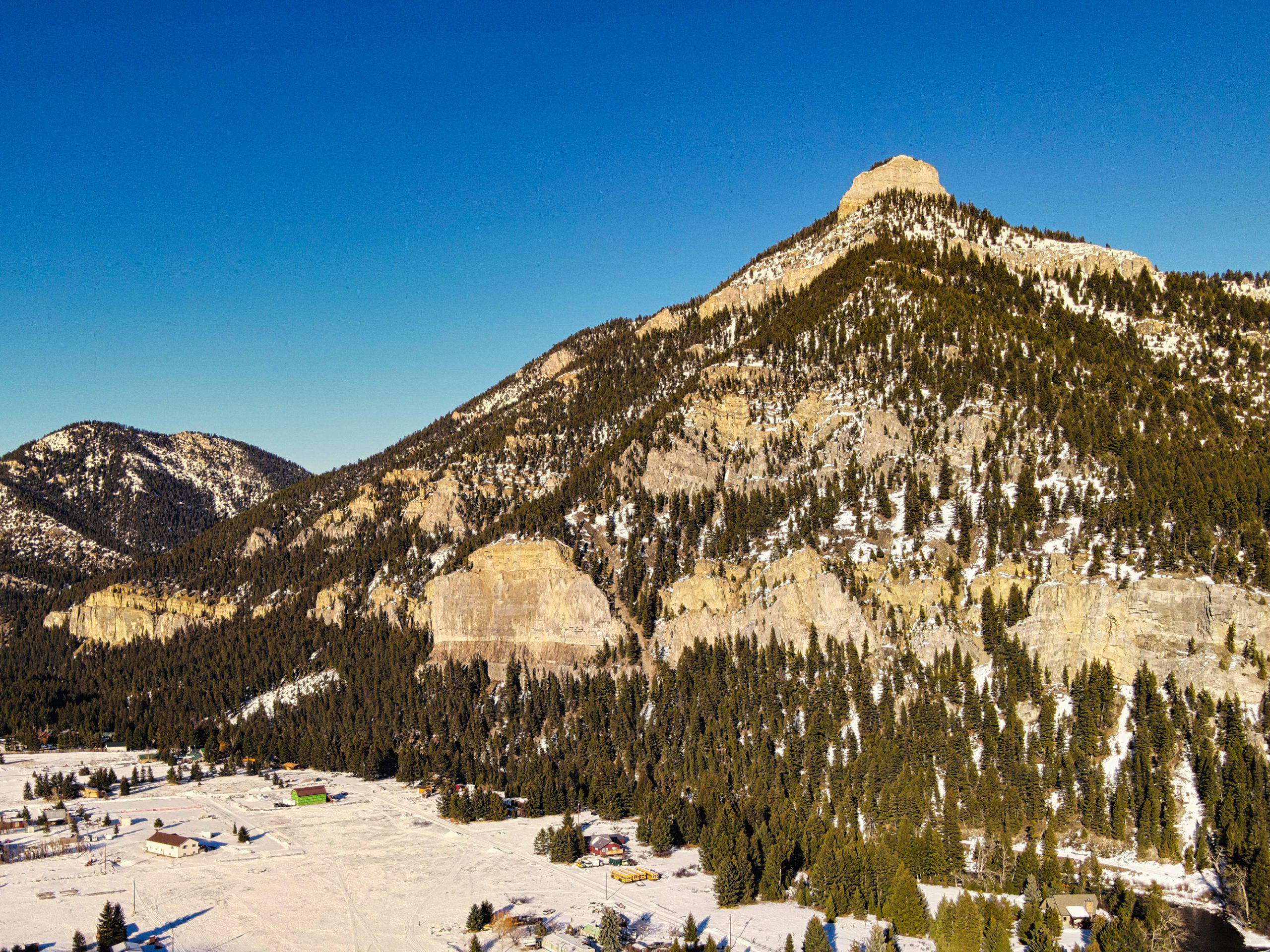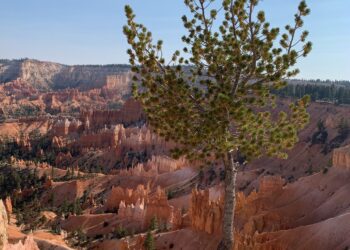By Paul Swenson EBS COLUMNIST

For all the times I have driven the Gallatin Canyon from Big Sky to Bozeman or vice versa, I am always struck by the diversity of rock structure and the myriad of rock types. Depending on where you are, the landscape is formed mainly by sedimentary rocks or metamorphic rocks. In this column I would like to focus on the sedimentary rocks from Spanish Creek to Garnet Mountain, and Dudley Creek to Porcupine Creek.
Dominating the skyline in the lower stretch of the canyon is Castle Rock, or Storm Castle, depending on how long you’ve been around. It is such a beautiful mountain visually, and an excellent place to study the sedimentary rocks that are exposed on its slopes.
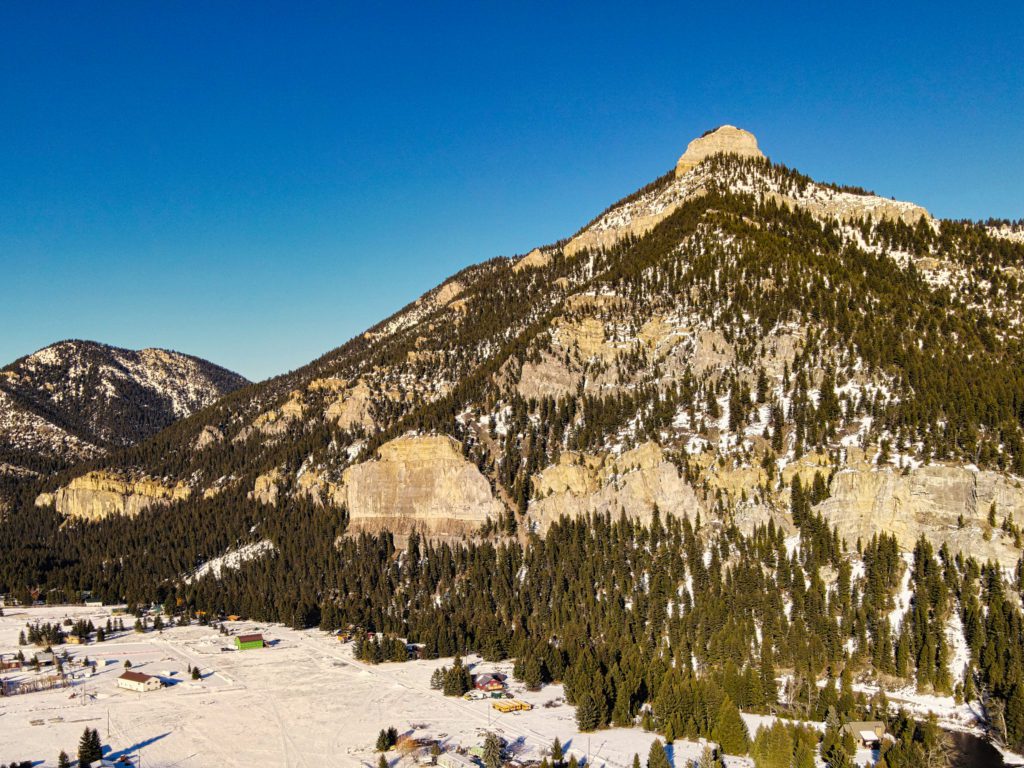
In this climate, shales form slopes since they are easily eroded, and limestones and sandstones form cliffs since they are more resistant to erosion. When you look at the photograph of Castle Rock, or observe it when you drive by, or even better yet, when you are hiking to the top, you notice alternating cliff bands separated by treed slopes. In describing and naming geologic formations, geologists use a change in lithology (rock type) to delineate a boundary or name change, so one can actually see the 10 named formations from the river to the top, ranging in age from a 525-million-year-old shale at the river level to a 315-million-year-old limestone at the top. This limestone is called the Madison Formation which you read about two columns ago. Keep it in mind.
Geology has several guiding principles, two of which I would like to discuss here: Original Horizontality, and Superposition. In most situations when sediment is deposited in water it will form horizontal layers. If you throw buckets of dirt in a pond, they will settle to the floor in horizontal layers. The first bucket you throw in will settle first, the second on top, etc.
This is the idea of Superposition, that sedimentary rocks will be oldest on the bottom and get younger as you approach the top of the set of rocks. Seems obvious to us now, but the budding science of geology was initially in conflict with the dogma of the 17th century church—that the earth was young and static—and it was difficult for many scholars to accept the difference in ages between different rock layers.
Back to the photograph, it appears that the layers of sedimentary rocks are fairly horizontal, which means by applying the Principle of Superposition, the rock layers at the bottom of Castle Rock are the oldest, while the “Castle” is the youngest.
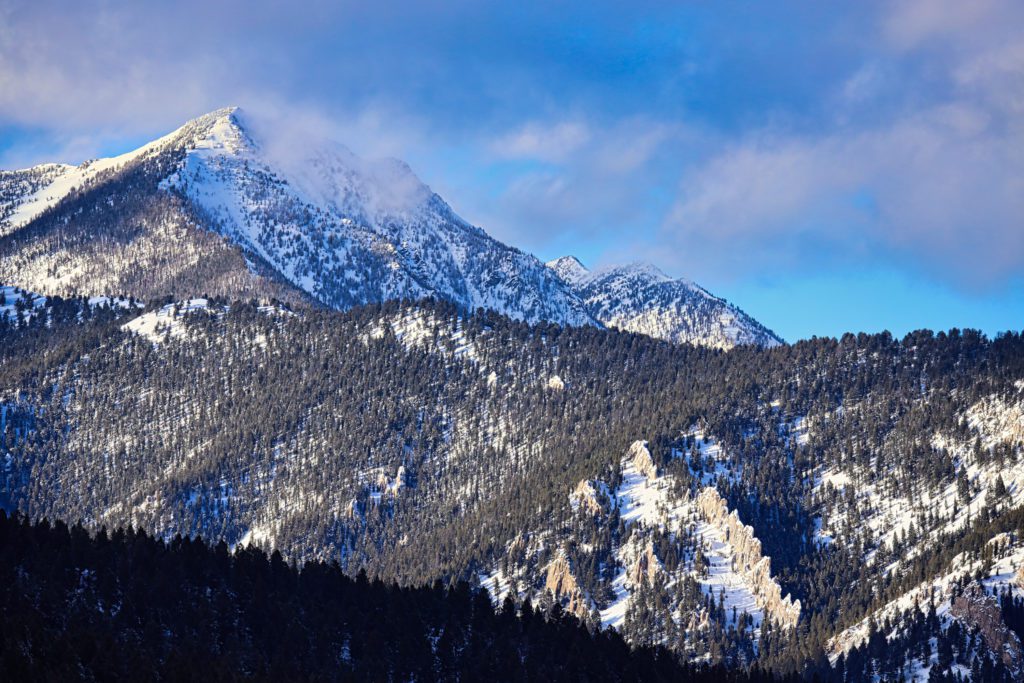
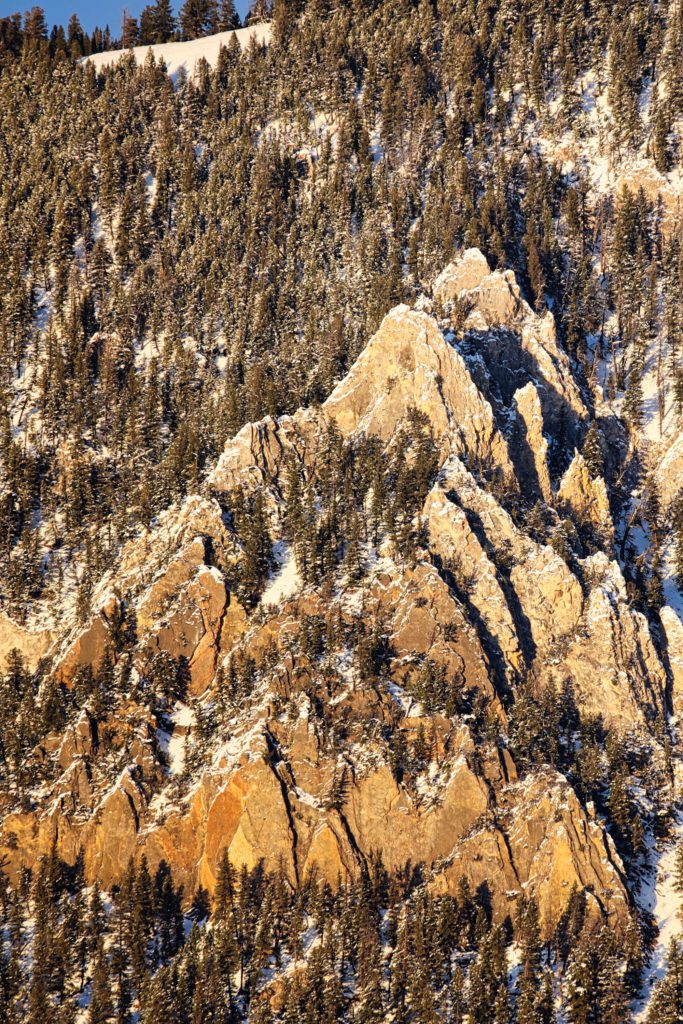
Now look at the second and third photographs. These show sedimentary layers between Dudley Creek and West Fork, and Levinski Creek and Porcupine Creek, that are very close to vertical. When sedimentary rocks are in this orientation and exposed to the elements, they erode into a shape called a “flatiron.” If you look closely at the third photograph, you can see the shape of the eroded rock looks like the bottom of an iron you press clothes with, i.e. its name. Those of you from Colorado know the Flatirons outside Boulder, formed in a similar manner.
These vertical rock layers violate our guiding principle of Original Horizontality. Early geologists had to struggle with this type of conflict and propose mechanisms that could explain how rocks that were once horizontal could now be vertical. It actually took centuries for a complete theory to be accepted, and it was not until the mid 1960’s that Plate Tectonics became the theory that could explain the amount of energy, force and deformation that geologists saw throughout the mountain ranges of Earth.
The rock formation forming the flatirons at the top of Levinski and Tick Ridges is the Madison Limestone, the same rock at the top of Castle Rock. If one can imagine it, all the rock layers discussed above where uplifted with the core of the Spanish Peaks then eroded off the top of the mountains over the last 65 million years and washed downstream into the Gallatin Valley, and further downstream. There is a small remnant of the oldest of these sedimentary rocks at the very top of Table Mountain.
So as you sit at the light waiting to turn left to go to Bozeman, look straight ahead and notice the near vertically oriented Madison Limestone and connect it in your imagination up and over the mountain to the top of Storm Castle. It’s a fun thought experiment to do now that you know.
Paul Swenson has been living in and around the Big Sky area since 1966. He is a retired science teacher, fishing guide, Yellowstone guide and naturalist. Also an artist and photographer, Swenson focuses on the intricacies found in nature.


